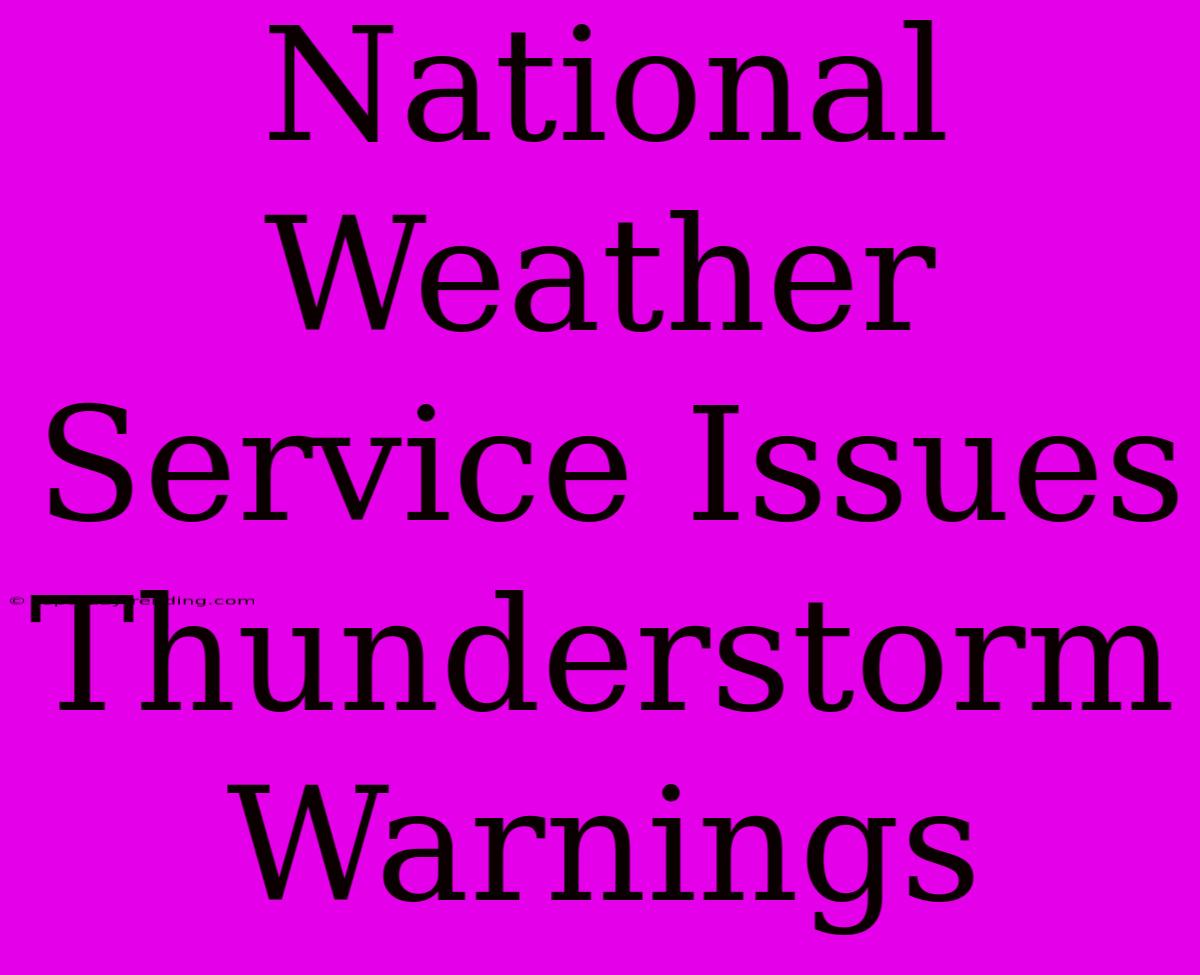National Weather Service Issues Thunderstorm Warnings: What You Need to Know
Thunderstorms are a common occurrence, but they can also be dangerous. The National Weather Service (NWS) issues warnings when thunderstorms pose a significant threat to life and property. Understanding what these warnings mean and how to stay safe is crucial.
What is a Thunderstorm Warning?
A thunderstorm warning is issued when a thunderstorm with strong winds, large hail, or tornadoes is occurring or imminent. These warnings are usually issued for specific counties or areas. They indicate that the threat is immediate and people should take action to protect themselves.
Why Does the NWS Issue Warnings?
The NWS relies on radar, satellite imagery, and weather spotters to monitor weather conditions. When a thunderstorm is detected with the potential for severe weather, the NWS issues a warning to alert people in the affected area.
What to Do During a Thunderstorm Warning:
Safety is paramount during a thunderstorm warning. Here are some essential actions to take:
1. Seek Shelter Immediately:
- Indoors: Move to a sturdy building, preferably a basement or ground floor room. Avoid windows and stay away from plumbing and electrical outlets.
- Outdoors: If you can't reach shelter, avoid open fields, tall trees, and bodies of water.
- Vehicles: Stay in your car with windows rolled up and avoid driving through flooded areas.
2. Stay Informed:
- Weather Radio: Tune in to a NOAA Weather Radio to get the latest updates.
- TV/Internet: Monitor local news channels or websites for weather reports.
- Mobile Alerts: Subscribe to weather alerts on your smartphone.
3. Know the Signs of Severe Weather:
- Dark, greenish skies: Indicates a strong thunderstorm.
- Hail: Watch for falling hail, which can be damaging.
- Sudden, powerful winds: This could signal the presence of a tornado.
4. Be Prepared:
- Emergency Kit: Have a kit with essential supplies like water, food, first-aid kit, flashlight, and batteries.
- Weather App: Use a reliable weather app to track thunderstorms in your area.
- Storm Shelter: Consider installing a storm shelter if you live in an area prone to severe weather.
5. Take Action:
- Avoid unnecessary travel: Stay off the roads if possible.
- Secure loose objects: Bring in outdoor furniture, trash cans, and anything that could be blown away by strong winds.
- Check on vulnerable neighbors: Make sure your neighbors are safe and informed about the storm.
After a Thunderstorm Warning:
- Stay Alert: Even after a warning is lifted, stay informed about weather conditions as thunderstorms can linger or develop again.
- Assess Damage: If there is damage, take pictures and contact your insurance company.
- Report Damage: Report any damage to your local authorities to help assess the overall impact of the storm.
Remember:
Thunderstorms can be unpredictable and potentially dangerous. By taking the necessary precautions and staying informed, you can significantly reduce your risk of injury or damage. Always remember that safety should be your top priority during a thunderstorm warning.

